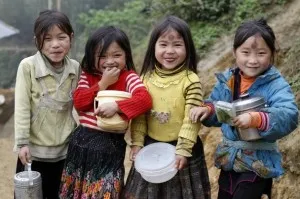
The fact that the tribes continue to live a very basic existence is partly economic and partly cultural. To them, a rice field, a garden, some cattle and a stilt house are all the prosperity they ever hoped for, going back countless generations. Homestays in these same stilt houses are very popular, of course, though some villages are more ‘authentic’ than others. The most-easily accessed destinations feel more like ‘theme resorts’ for tourists, where they get to rough it local-style, though technically they are real villages. But if you venture to the more remote hamlets, they offer fascinating glimpses of lifestyles seemingly stolen from history
Other News:
- Fansipan Cable Car Review 2025 – Guides, Ticket Price & Tours
- How hard is the trek to Fansipan mountain peak ?
- Beautiful snowy winter in Sapa
- Muong Hoa Valley
- Sapa – Winter festival 2022
- Swimming pool on mountain at Topas Ecolodge – One of the interesting stops of Sapa
- Salmon hot pot in Sapa – the best choice for a cold winter day
- Picturesque Valleys in Northern Vietnam
- Sapa- challenging for mountainous trekking
- Top Sapa Tours from Hanoi in Autumn


 Hot Deals
Hot Deals